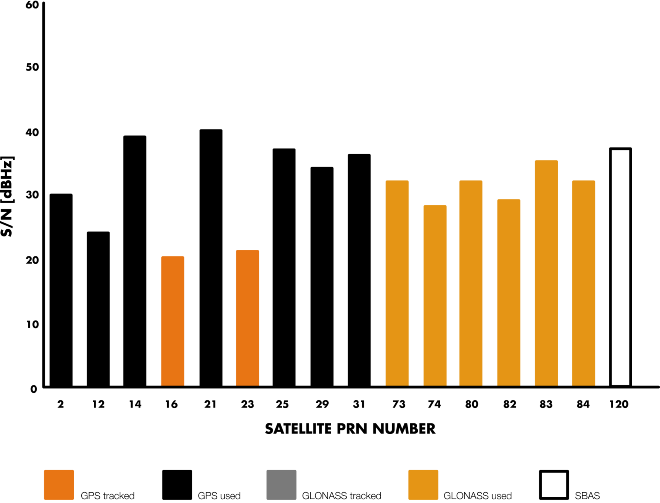
GPS150
TECHNOLOGY
PRESS
VIDEO
PROMOTION
DIGITAL YACHT WEBSITE

NMEA 0183
GPS
GLONASS
AUTO GNSS
MANUAL GNSS
10Hz UPDATE
TURBONAV
GPS150 OPERATING MODES
Stunning 50 channel performance.
DualNav™ – GPS/GLONASS Manual or auto select your chosen satellite navigation.
TurboNav – Configures unit for ultra fast 10Hz with data sent at 115200 baud.
10 times faster position information transmitted 24 times as fast on the NMEA bus.
Ideal for performance sailors, fast craft as well as slow speed navigation.
GPS AND NOW GLONASS
Knowing your position whilst at sea is key to safe navigation. What we now take for granted, was extremely difficult, time consuming and inaccurate. Then, in the latter half of the 20th century, came the electronic positioning systems – Decca, Loran, Transit and in the 1990s, the global positioning system, GPS. Over 20 years have passed since the first GPS receivers were commercially available and in this time the whole world has come to rely on this US funded technology. Now every boat, plane, car and train that we travel on has GPS navigation and even your smart phone can give a GPS position accurate to within 10m, anywhere in the world, at the touch of a button.
Much political discussion has taken place over our reliance on GPS technology, to the point where both Europe (Galileo) and China (Compass) are developing their own satellite based navigation systems, which are scheduled to be fully operational by 2020. However, whilst GPS was being developed in the 1980s, there was another competitive system developed in Russia called GLONASS. This system was very much over shadowed by the American GPS system and due to the secrecy surrounding the technology and the difficulties for non-Russian companies to license this
technology, it never achieved wide spread commercial use outside of Russia and surrounding countries.
During Russia’s difficult financial period between 1989-1999, government spending on their space program was cut by 80% and launching of new GLONASS satellites stopped. With relatively short life spans the GLONASS satellites soon started to fail and by 2001 there were only 6 satellites still operational and the GLONASS service effectively ceased.
Most observers at the time thought this would be the death of GLONASS but in 2000, with the Russian economy recovering, President Vladimir Putin took a special interest in GLONASS and made the restoration of this service a high priority. Between 2002-2011, a large investment was made and at the end of 2011 GLONASS was fully restored and now offers worldwide coverage (with 24 operational satellites) and accuracy almost as good as GPS. In areas of high Latitudes (North and South) GLONASS is more accurate than GPS due to the orbital position of the satellites.
DUALNAV™ – NEW TECHNOLOGY
Now with the GPS150 DualNav™ technology, boat owners can have a single sensor that will automatically read satellite data from both GPS and GLONASS constellations, choosing the best signals from over 50 satellites. Wherever you are in the world you now have twice the satellites to choose from resulting in the GPS150 receiver having much better coverage, time to first fix and positional accuracy. Add to this the new high sensitivity receiver design, selectable baud rate and 10Hz position update rate and you have a GPS receiver that is significantly better than every previous marine GPS receiver on the market.
The new performance is particularly noticeable if the receiver is mounted below deck/inside the wheelhouse where the high sensitivity receiver still gives a good position fix or when there are obstructions blocking the view of the sky, such as a wet sail shadowing the antenna or when sailing in rivers or close to cliffs, plus DualNav™ technology with more satellites to choose from, gives a much more accurate fix.
On larger boats, it is now possible to have two completely separate position sources, not just two GPS units but two different positioning systems so that you can compare and validate your actual position. Set one GPS150 to GPS mode and another GPS150 to GLONASS mode and you have dual redundancy and two independent positioning systems.
The GPS150 also supports SBAS (Satellite-Based Augmentation System) which is the generic name given to the differential signal transmitted by various local geo-stationary satellites. SBAS allows the GPS150 receiver to remove errors in the position due to environmental conditions and improves accuracy down to <1m. Using WAAS in the US and EGNOS in Europe the GPS150 will automatically switch to differential SBAS mode when available.

50 CHANNEL PERFORMANCE
The GPS150 is capable of tracking up to 50 satellites and can use GPS and GLONASS constellations for continuous, reliable navigation. Choose from GPS, GLONASS or combination modes with manual or auto selection.
ADDRESS
Digital Yacht HQ
The Technology Centre
Failand Farm
Green Lane
Failand
Bristol
BS8 3TR
United Kingdom
sales@dualnav.com
